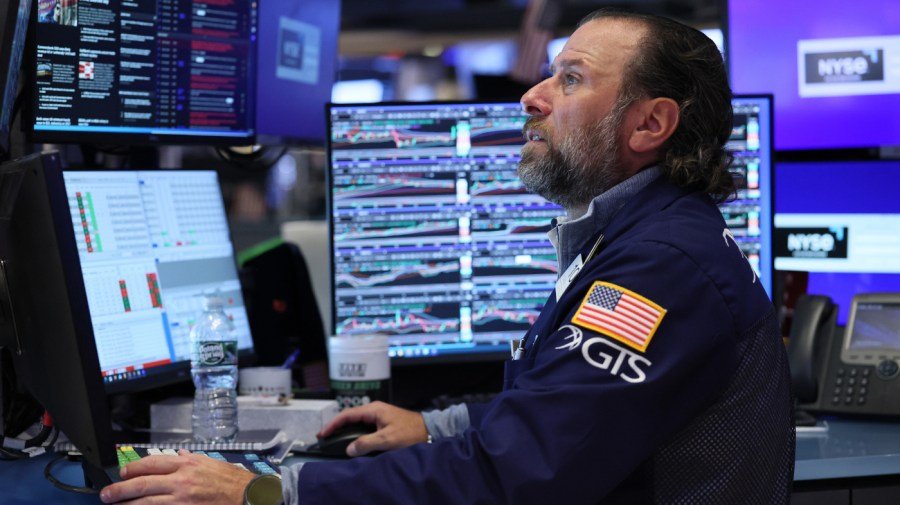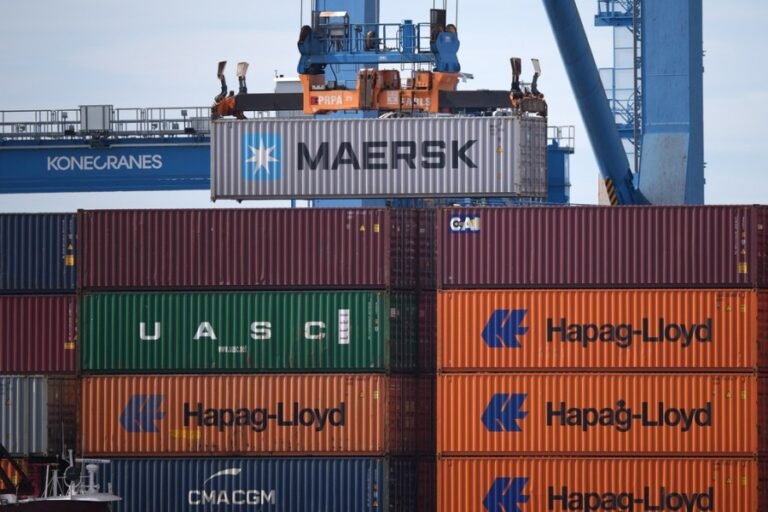
Equities are hitting record highs and corporate earnings keep surprising on the upside. Yet beneath this glossy surface, unease is simmering and public pessimism is growing. Are markets telling a fairy tale detached from reality?
Multiple forces are unsettling the world order — from retreating globalization to rising populism and demographic headwinds. There are bright spots, such as artificial intelligence, that could turn the tide. The risks, however, are real and multifaceted, and solutions are rarely as simple as populists would have us believe.
The prosperity of recent decades rested on three pillars: a growing global workforce, rapid technological advances and a stable U.S.-led world order — often dubbed Pax Americana. That last pillar is now shaking.
The U.S., once the unrivaled guarantor of free trade and secure sea lanes, has turned toward protectionism and foreign policies based on narrowly defined interests, partly in the belief that this is the way to counter China’s rise. Trade conflicts and geopolitical flashpoints are amplifying uncertainty and hurting global growth.
Yet outright collapse is unlikely. The U.S. remains a military and economic giant and NATO has been recently strengthened by Sweden and Finland’s accession. Competition with China may even spur innovation — the race in AI and semiconductors could provide a boost to the world economy.
We are not so much witnessing the end of world order as a shift toward a multipolar one. Rather than full deglobalization, the world is morphing into a form of fragmented globalization sometimes called slowbalization. This will result in a messier world, but not necessarily a poorer one.
That said, the combination of isolationist impulses and assertive foreign policies is hardly a recipe for a new era of growth. Tariffs and migration curbs under President Trump, Russia’s war in Ukraine, China’s stance on Taiwan and U.S. skirmishes with countries from Venezuela to Iran all feed volatility and uncertainty.
Voters fearful about the future are rallying to populist parties promising easy fixes: less immigration, higher barriers to trade, and a pedestal for Joe Six Pack. These policies risk suffocating economic dynamism.
Protectionism and lower immigration could dampen growth and reignite inflation, while governments grapple with shrinking tax bases and ballooning pension and health care costs.
The likely outcomes? Higher wealth taxes, potential capital controls or politically driven inflationary policies to ease sovereign debt burdens — all of which would push real interest rates higher, weighing on both equities and bonds.
Still, populism is not always destructive. Once in power, many populist parties have moderated their tone and policies. Deglobalization itself offers some upside: investment in local supply chains creates jobs and reduces reliance on distant markets.
The International Monetary Fund forecasts for 2052-26 still point to stable global growth, suggesting the global economy is more resilient than doom scenarios imply.
Populism may not kill the goose that lays golden eggs; it could hatch new ones, such as support for domestic industries. History, however, shows that more often than not, populism delivers bitter rather than sweet results.
Aging is the elephant in the room. Shrinking workforces weigh on growth and strain welfare systems. Governments face unpalatable choices: cut pensions and healthcare — political poison — or raise taxes on wealth and corporate profits.
With older voters increasingly dominant, structural reforms such as raising retirement ages are proving politically toxic. This feeds uncertainty and bolsters populist narratives.
Yet aging also brings opportunity. Healthier seniors are staying active longer, while industries serving older populations are thriving. By 2030, seniors are projected to make up approximately 20 percent of the U.S. population, with significant spending growth from the 75 and up age group.
Meanwhile, technology can offset demographic drag: AI and robotics are boosting productivity in logistics, administration, and beyond. That could expand supply-side capacity, allowing governments more fiscal room without stoking inflation. The specter of unsustainable welfare states is a real risk, but decline is not inevitable.
AI is often cast as a panacea, but the hype deserves a sober eye. AI is already embedded across many industries lifting productivity worldwide. But pitfalls loom. Sky-high tech valuations hint at bubble dynamics, adoption may be slower than boosters predict, and job losses could fuel further discontent.
Still, AI’s benefits are undeniable: easing labor shortages, cutting costs, and opening new markets. Not a cure-all, but a powerful counterforce to stagnation.
For investors, vigilance is paramount. Politics will weigh more heavily in the coming years, as governments face strained finances and electorates demand change. This points to higher rates and thinner equity returns, especially for pricey tech names.
Gold, inflation-linked bonds and commodities will be safe havens in scenarios of inflation and geopolitical turmoil. But beware excessive gloom: AI-driven growth and regional investment shifts may surprise on the upside, particularly in small caps and value stocks, which are less inflated than megacap tech.
The world order is wobbling, but it is not collapsing. Investors who navigate with a mix of caution and opportunism can weather the storm. It is time to trim the sails, not abandon ship.
Maarten Spek and Andy Langenkamp are strategic analysts at ECR Research and ICC Consultants.






